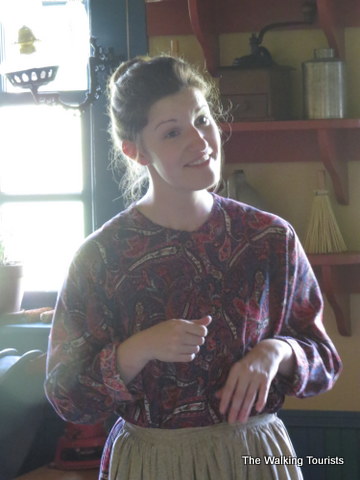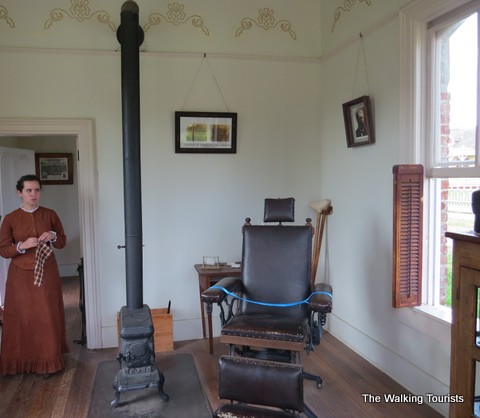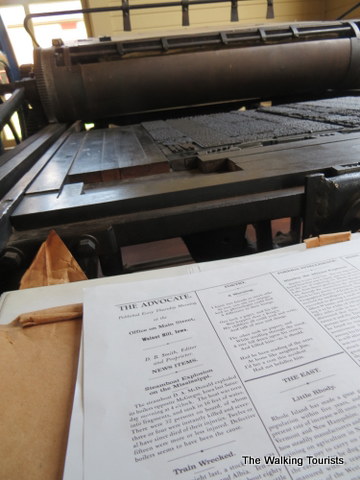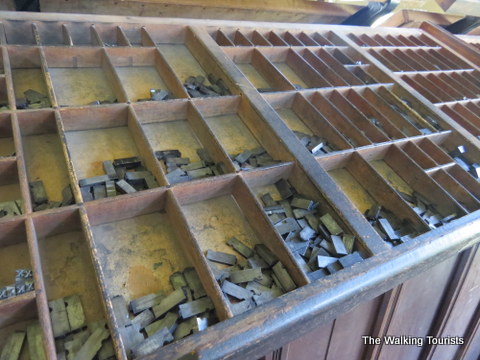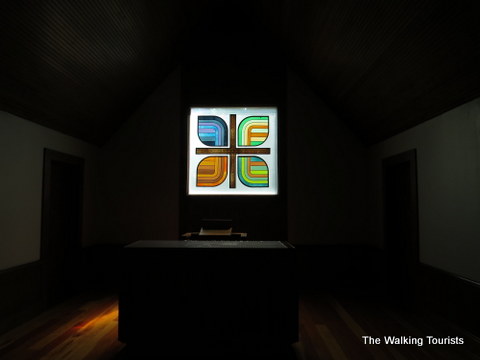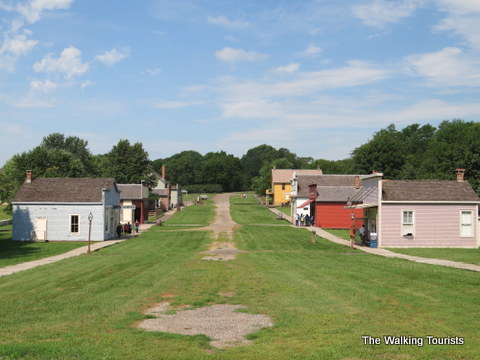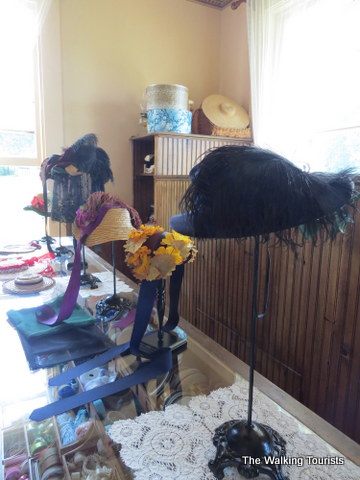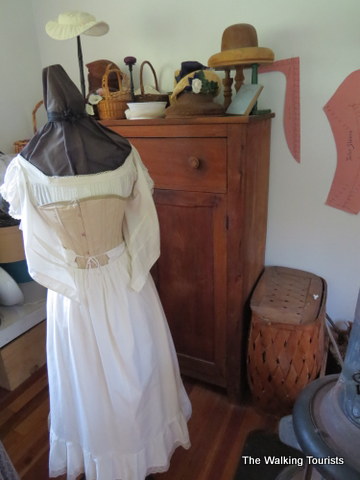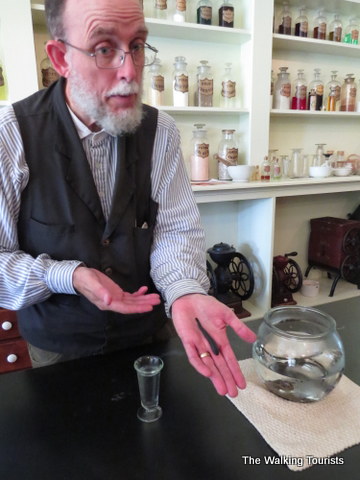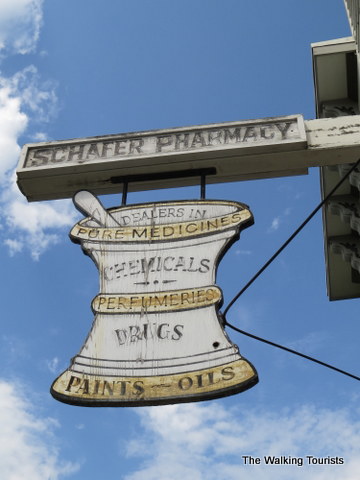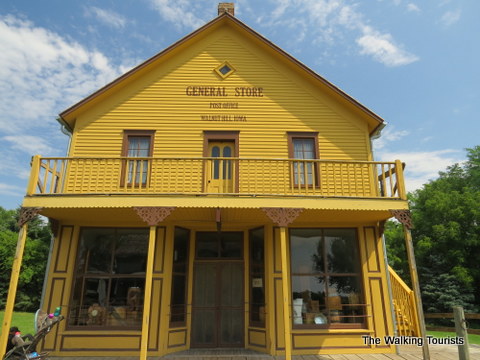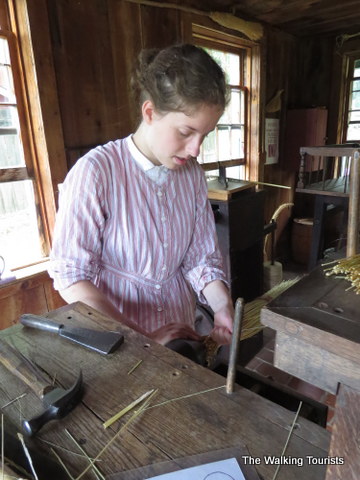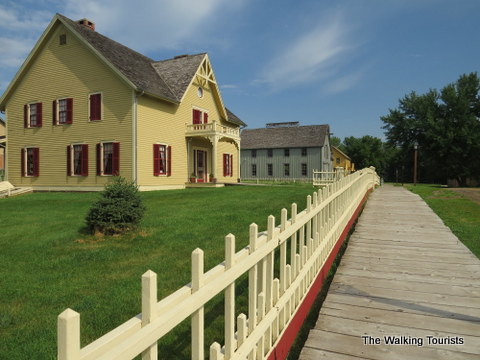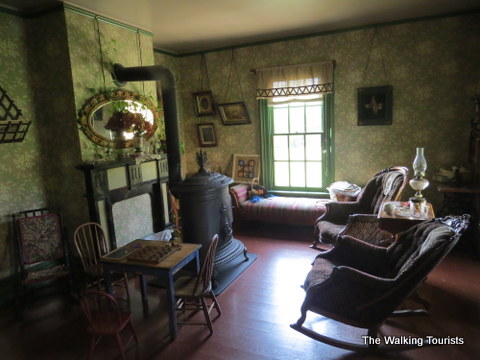Harvest season: Take a walk back in time at Des Moines’ Living History Farms
Editor’s Note: As harvest season wraps up around the United States, we are taking a look at the role agriculture has played in the Midwest. Today, we take a look at a Living History farm and town in the Des Moines area…
Farming has been the backbone of America since its founding. The Native Americans taught the pilgrims how to plant and grow crops. Since then, agriculture has seen improvement upon improvement. However, it’s fun to take a step back and see what farming was like in years past. The Living History Farms in Urbandale, Iowa, offer visitors that chance. The farm complex consists of three farming periods – 1700 Native American, 1800 settler and 1900 farmstead – and an 1875-era town.
The thing that stands out about the complex is the re-enactors. They dress for the era they represent and try to talk as if they are in that time period.
My favorite part of the visit was the town. You walk along a boardwalk of Walnut Hill for the most part while visiting. Each building in town is actually from the 1800s or early 1900s. Almost all buildings are accessible to visitors.
The doctor’s office had a re-enactor there. She told us how physicians didn’t require a license to practice in the 1800s. However, they would have apprenticed under a more experienced doctor. The office was small. The exam room was very small.
The local newspaper – The Advocate – had a small working ink press. The representative explained how presses worked and even had children use the press.
I loved this newspaper. It had several old presses, along with a lot of letters to be used. It’s amazing to realize we’ve gone from a person setting up the letters on the press for each page and then running that press by hand to a digitalized world, where we merely write on a computer and we can edit from anywhere.
The church stands at the end of the street. A nice white picket fence borders it. The church was open and airy. I liked the stained glass behind the pulpit.
You can get a nice view of the town from in front of the church. Can you imagine what life must have been like during this time?
A lady’s store is located on the main street. The store has a ton of hats on display. The staff actually makes the hats by hand. They sell them in the gift shop.
The store keeper also described what a lady might wear during the summer months. A seamstress dummy has a dress and the corset that would be worn.
The local druggist was showing off leeches to visitors. He had a bowl with several of the blood-sucking creatures. He used a fake one to have children touch to get an idea of what they feel like.
The drug store was an interesting visit. We checked out the ingredients he would use to make some drugs for whatever ailed locals.
The local mercantile had quite the inventory – clothing, food, brooms, etc. The storekeeper told us that locals would have to haul in their own barrels or buckets for “grocery shopping.”
We actually watched a girl make brooms at the broom shed. She explained the process that went into making each broom. She can knock out a few on a good day. The brooms are sold in the gift shop.
The town has a one-room schoolhouse, of course.
Two houses caught our attention.
The first was a middle-class home for the time period. It was a modest, but well decorated house. The owners would decorate the kitchen to reflect their ethnic background, the house host told us. I believe these people were Danish, so the kitchen would have some color or design to remind them of the homeland.
The second house was a mansion, really. The Flynn House was a Victorian-era mansion. The property has a well-maintained flower garden in front.
The house has three floors, with seven bedrooms.
The parlor was decorated well and featured a piano.
The dining room was large and had several desserts on display from the time period. Fortunately, they were replicas.
Following our tour of the home, we headed to the local law office – to take a gander inside and to meet the tractor that would transport us back even further in time.
The farm complex is about a ¾-mile route that starts with the 1700 farm and ends with the 1900 farm.
The 1700 farm was very basic. It showed a Native American summer “farm” – a tipi, earth lodge and two drying racks were on display. There are informative signs scattered along the walking trail that highlights information about the Native Americans of the region.
We moved along to the 1800 farm. The farmer had his lawn mowers going – a small herd of sheep grazing on grass near the cornfield.
Speaking of grazing, we showed up at lunch time. The family of four (all re-enactors) was dining on ham, mashed potatoes and bread. The family explained they were eating food that was common during the time.
The cabin was small, with one bed. I believe the kids are sleeping outside or on the floor.
A mama cow and her calf were enjoying some quality time together during our visit.
We hit the road, advancing about a century later to the 1900 farm. The thing about this farm is that it could apply to some places today.
The barn had a horse grazing on some hay, while a couple of cattle were outside, trying to stay cool in the shade of it.
Have you ever seen a hog about “five feet long?” Well, that was my guess for the humongous porker lying in its shed. Maybe not five feet long, but he was a big’n.
The farmhouse brought back memories to my grandma’s house in northeast Nebraska in Santee. It wasn’t the same style, but the kitchen that stuck out. The stove, to be precise. Grandma had a wood-burning stove. I swear the coffee pot even resembled the one she had. I had to check with my siblings to make sure I wasn’t fantasizing. Even, a cousin confirmed that memory.
We shared a laugh with one of the women at the house. We joked about her pumping well water into a bowl to wash dishes. We laughed about the thought of kids today whining because they have to load or unload a dishwasher. Can you imagine having to take buckets to the local creek or well, fill them up and carry them back to the house?
Following the tour of the 1900 farm, we headed over to the exhibit hall to await our ride back to 2014. The hall had a special display on Prohibition and the birth of organized crime. Very interesting take on the rise of the mob and the effect Prohibition had on America.
Apparently, it was not illegal to consume alcohol during that period, just to manufacture and distribute it.
Well, once we made it to the tractor ride, it took only a few minutes and we were back in present day. It was a fun trip back in time.
The Living History Farms are a great way to spend 3-4 hours. You will need a minimum of three hours to see everything. The complex is open May-October.
We recommend visiting the farms complex. We had a great time. It is definitely family friendly.
For more information on the Living History Farms, please visit the website at http://www.lhf.org/.






